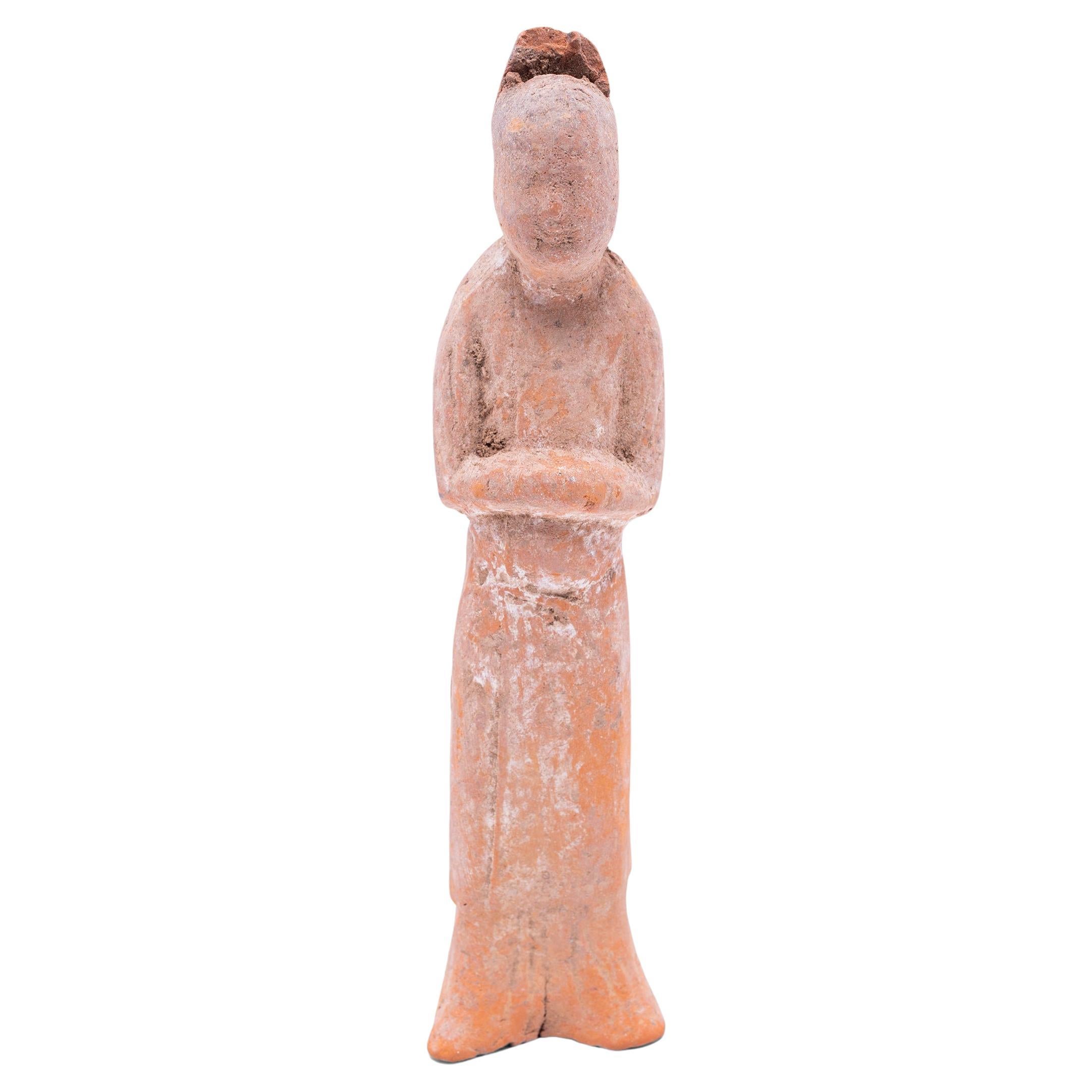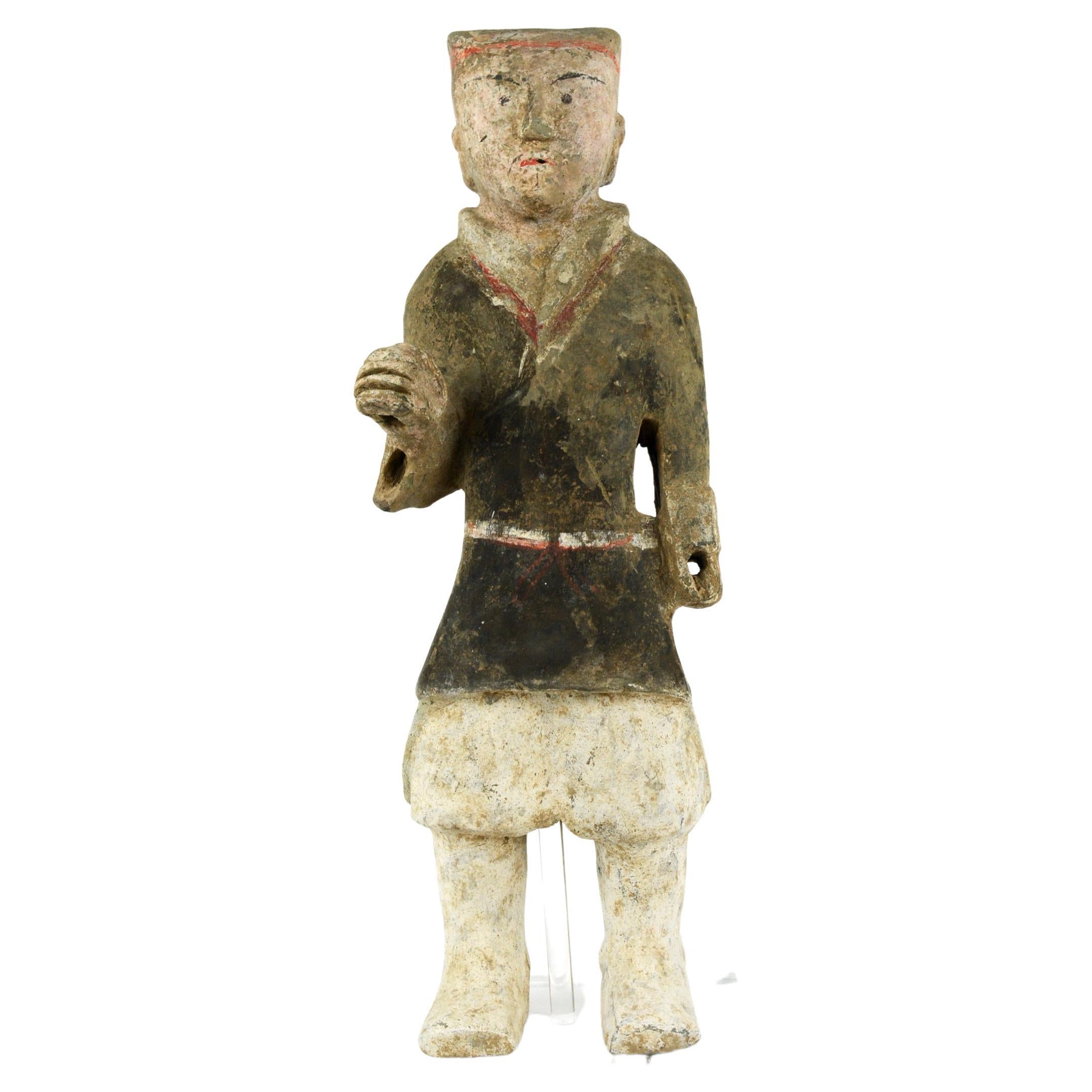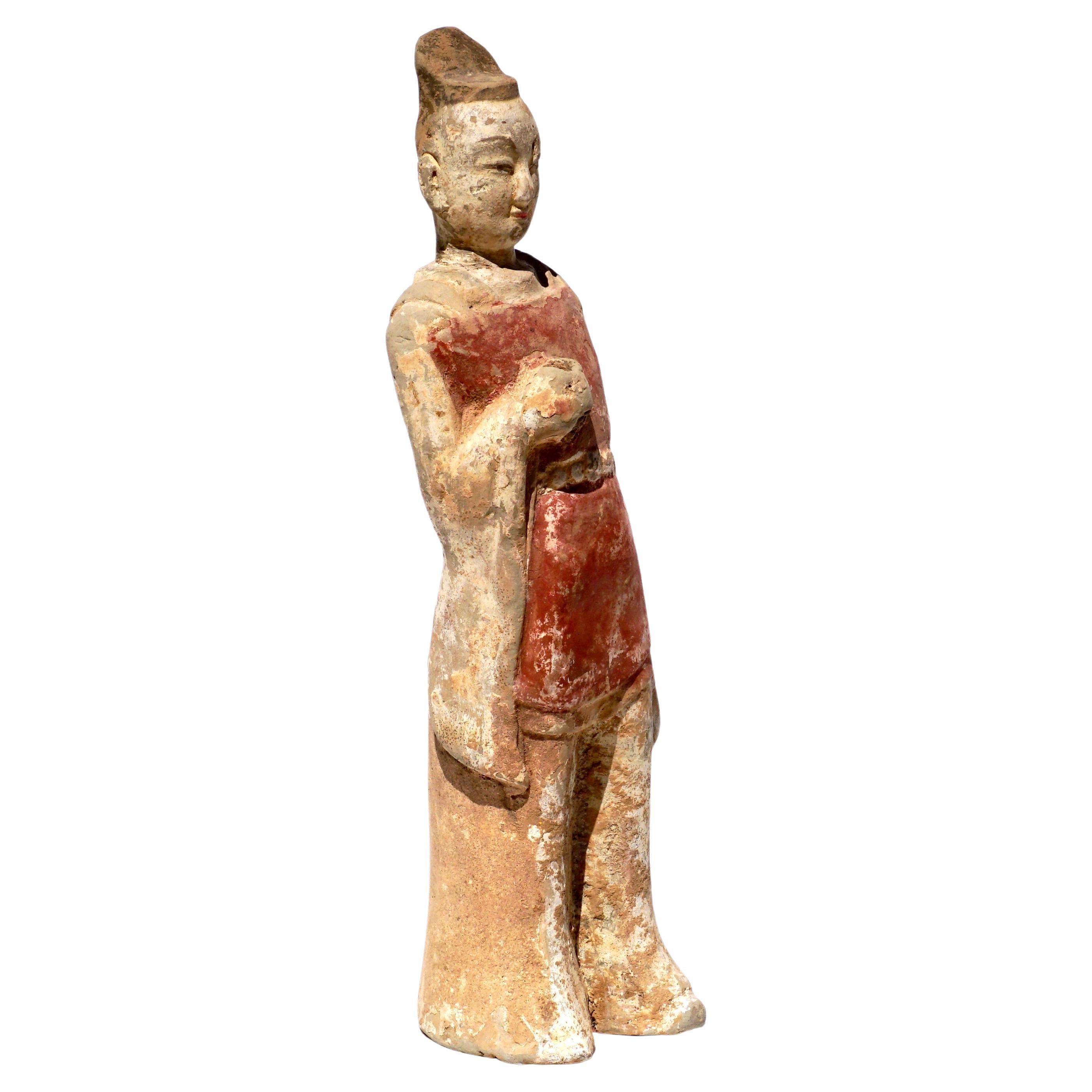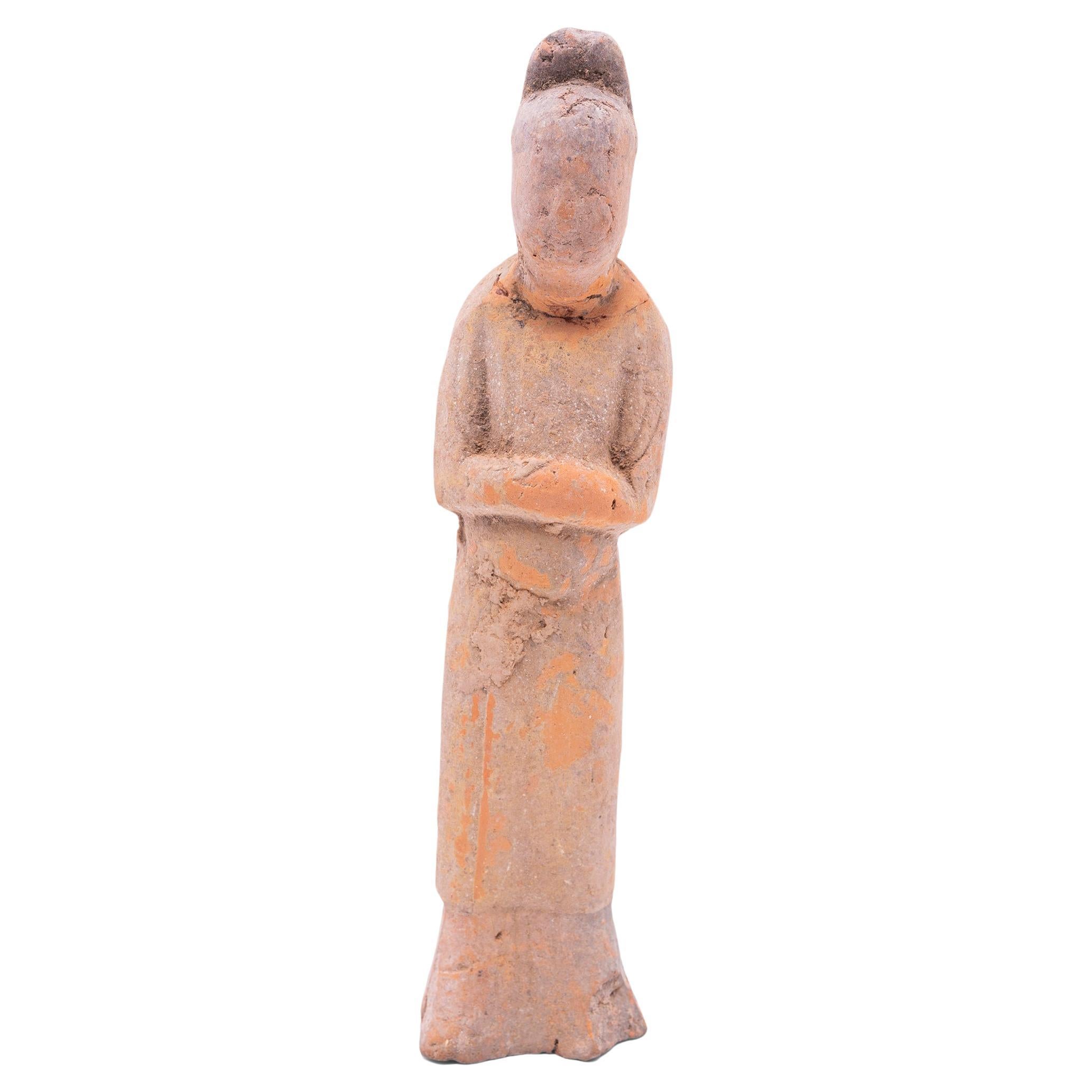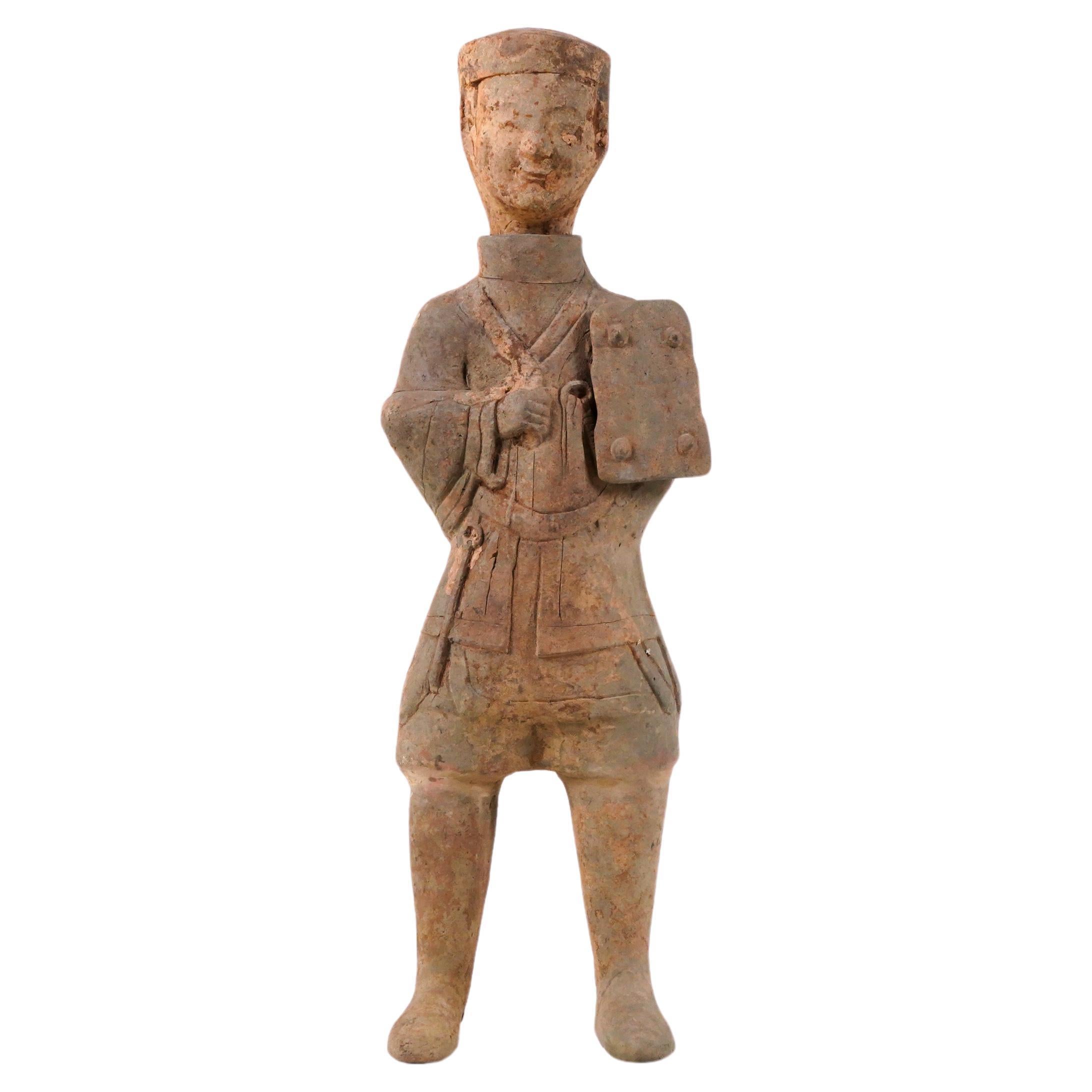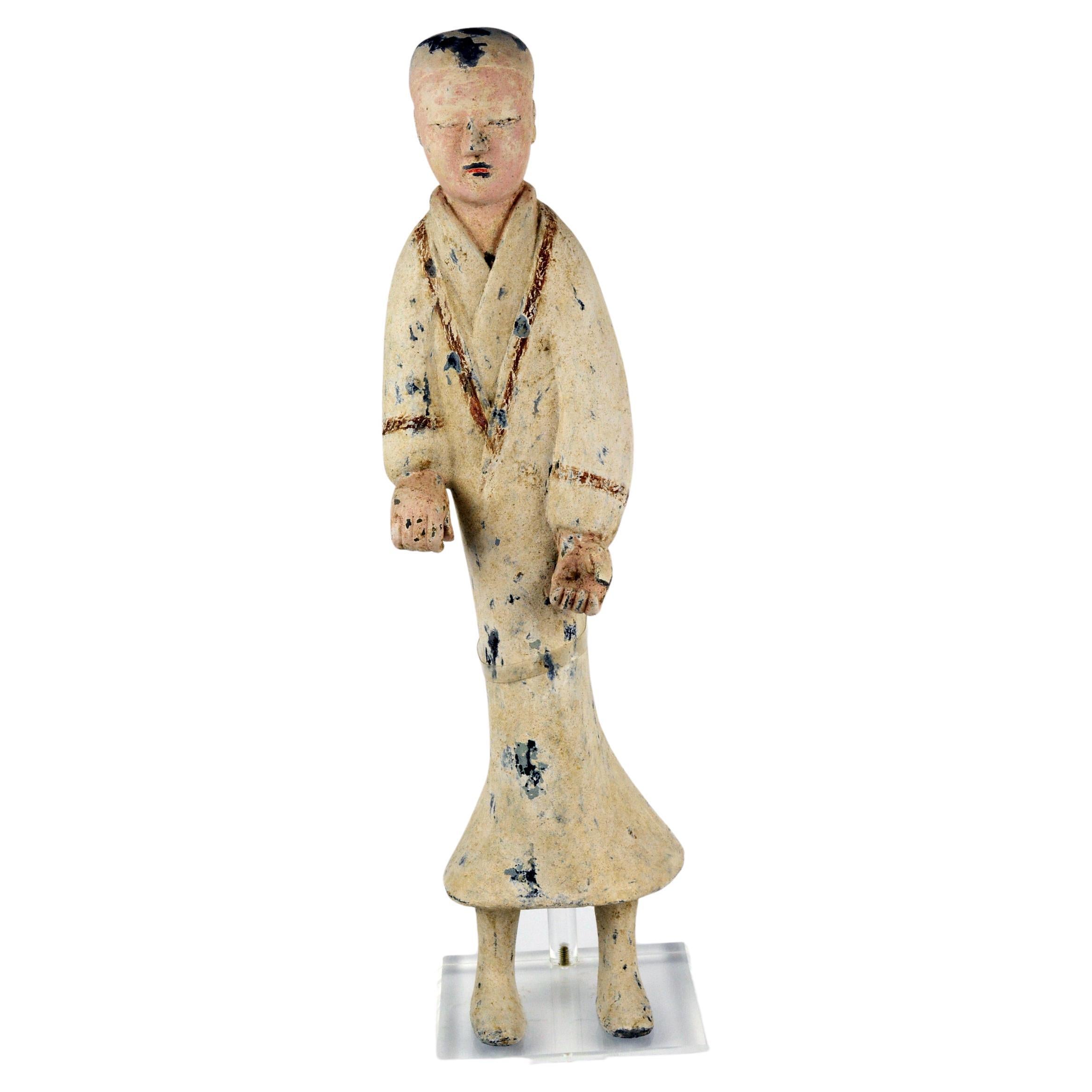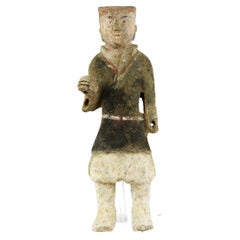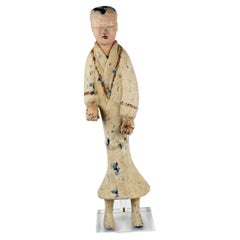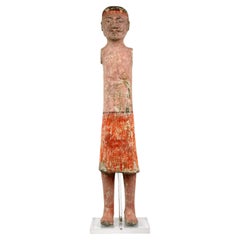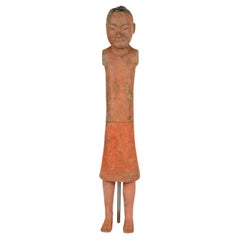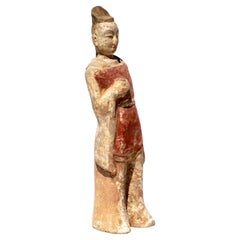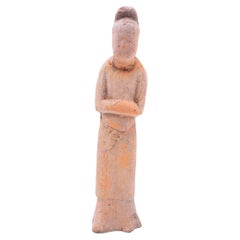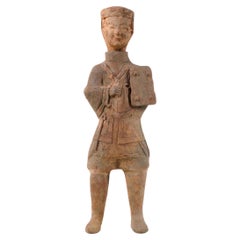Want more images or videos?
Request additional images or videos from the seller
1 of 7
Eastern Wei Soldier
$650
£488.30
€563.09
CA$901.96
A$1,002.28
CHF 525.20
MX$12,291.13
NOK 6,698.66
SEK 6,301.86
DKK 4,202.64
Shipping
Retrieving quote...The 1stDibs Promise:
Authenticity Guarantee,
Money-Back Guarantee,
24-Hour Cancellation
About the Item
Eastern Wei Soldier 9.5h
An unglazed figure of a soldier. This figure sits on a base which measures 1h x 3.25d x 3.75w (inches).
Red Pottery Origin: Hebei Period: 534 - 549.
- Dimensions:Height: 9.25 in (23.5 cm)Width: 2.25 in (5.72 cm)Depth: 2.25 in (5.72 cm)
- Materials and Techniques:
- Place of Origin:
- Period:
- Date of Manufacture:15th Century and Earlier
- Condition:Wear consistent with age and use. Many of these figures have been found broken. There may be some repair but it is not evident.
- Seller Location:Santa Monica, CA
- Reference Number:Seller: MM9541stDibs: LU7830233592472
About the Seller
5.0
Vetted Professional Seller
Every seller passes strict standards for authenticity and reliability
1stDibs seller since 2022
9 sales on 1stDibs
Typical response time: 4 hours
- ShippingRetrieving quote...Shipping from: Santa Monica, CA
- Return Policy
Authenticity Guarantee
In the unlikely event there’s an issue with an item’s authenticity, contact us within 1 year for a full refund. DetailsMoney-Back Guarantee
If your item is not as described, is damaged in transit, or does not arrive, contact us within 7 days for a full refund. Details24-Hour Cancellation
You have a 24-hour grace period in which to reconsider your purchase, with no questions asked.Vetted Professional Sellers
Our world-class sellers must adhere to strict standards for service and quality, maintaining the integrity of our listings.Price-Match Guarantee
If you find that a seller listed the same item for a lower price elsewhere, we’ll match it.Trusted Global Delivery
Our best-in-class carrier network provides specialized shipping options worldwide, including custom delivery.More From This Seller
View AllHan Dynasty Warrior
Located in Santa Monica, CA
Unlike Qin terracotta, Han Dynasty pottery figurine/ sculptures convey a more subdued and non-aggressive look. The figurines are clothed with bright pigmen...
Category
Antique 15th Century and Earlier Chinese Sculptures and Carvings
Materials
Pottery
$800 Sale Price
60% Off
Han Dynasty Court Attendant
Located in Santa Monica, CA
This is a Han Dynasty unglazed dark pottery female attendant dressed in a white robe with straps of red pigment on the collar. From Xian. She is on a stand. The measurements reflect ...
Category
Antique 15th Century and Earlier Sculptures and Carvings
Materials
Pottery
$4,400 Sale Price
20% Off
Han Dynasty Stick Figure from Xian
Located in Santa Monica, CA
This Han pottery figure of a foot soldier is molded and engraved with facial details. It has been fired at high temperatures. The color pigments are painte...
Category
Antique 15th Century and Earlier Han Sculptures and Carvings
Materials
Terracotta
$800 Sale Price
46% Off
Han Dynasty Stick Figure from Xian
Located in Santa Monica, CA
This Han pottery figure of a foot soldier is molded and engraved with facial details. It has been fired at high temperatures. The color pigments are painte...
Category
Antique 15th Century and Earlier Chinese Han Sculptures and Carvings
Materials
Terracotta
$800 Sale Price
46% Off
Set of Five Eastern Wei Musicians
Located in Santa Monica, CA
This is a set of 5 unglazed Eastern Wei Musicians holding drums. They are from Hebei and are made of red pottery. 534 - 539 AD. Each figure has a stand whi...
Category
Antique 15th Century and Earlier Chinese Sculptures and Carvings
Materials
Terracotta
$800 Sale Price / set
20% Off
Han Dynasty Horse and Rider
Located in Santa Monica, CA
Han Equestrian
This equestrian represents the standard of Western Han equestrian found in Yang Jiawan of Xian. The technique of making includes molding, engraving and cold painting....
Category
Antique 15th Century and Earlier Chinese Han Sculptures and Carvings
Materials
Pottery
You May Also Like
Chinese Male Mingqi Spirit Attendant
Located in Chicago, IL
Molded of earthenware, this petite sculpture is a type of centuries-old burial figurine known as míngqì. Such model figures were placed in tombs of individuals with high status to ensure a safe journey to the afterlife. Meant to depict the pleasures of daily life, common burial figures...
Category
Antique 15th Century and Earlier Chinese Antiquities
Materials
Ceramic
Chinese Northern Wei Terrecotta Attendant - TL Tested
Located in Dallas, TX
Circa 386-534 ADA well defined Chinese Northern Wei Terracotta Attendant Statue.
The Figure is depicted standing with his hands along the body, wearin...
Category
Antique 15th Century and Earlier Chinese Tang Figurative Sculptures
Materials
Terracotta
Chinese Male Mingqi Spirit Attendant
Located in Chicago, IL
Molded of earthenware, this petite sculpture is a type of centuries-old burial figurine known as míngqì. Such model figures were placed in tombs of individuals with high status to ensure a safe journey to the afterlife. Meant to depict the pleasures of daily life, common burial figures...
Category
Antique 15th Century and Earlier Chinese Chinese Export Antiquities
Materials
Ceramic
A Han Dynasty Terracotta Figure
Located in Chicago, IL
A large Chinese terracotta tomb figure (Ni Yong) from the Eastern Han Dynasty (25-220 AD), likely from the area of modern-day Sichuan. It appears to depict a groom in full costume an...
Category
Antique 15th Century and Earlier Chinese Antiquities
Materials
Terracotta
$12,600 Sale Price
30% Off
19th Century Chinese Figure of a Guardian God
Located in Somis, CA
This 19th-century hand-carved polychromatic wood figure depicts a powerful Guardian, poised on a recumbent tiger with his right fist raised in a striking motion, his eyes bulging wit...
Category
Antique Early 19th Century Chinese Sculptures and Carvings
Materials
Wood
Chinese Female Mingqi Spirit Attendant
Located in Chicago, IL
Molded of earthenware, this petite sculpture is a type of centuries-old burial figurine known as míngqì. Such model figures were placed in tombs of individuals with high status to en...
Category
Antique 15th Century and Earlier Chinese Figurative Sculptures
Materials
Earthenware
More Ways To Browse
Antique Soldiers
Soldier Figurals
Chinese Soldier
Terracotta Soldier
Chinese Terracotta Soldier
Chinese Jade Sculpture
Tall Stone Sculptures
Antique Temple Carving
Lifetime Arts And Crafts Furniture
Antique Chinese Ornaments
Chinese Carved Figures
Large Stone Carving
Chinese Guardian
17th Century Wood Carving
Large Chinese Carved Sculpture
Burmese Carved Wood
Lotus Buddha
18th Century Buddha
